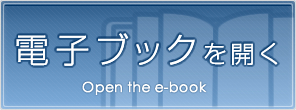For the Safety Navigation In Japanese Coastal Waters page 49/120
このページは For the Safety Navigation In Japanese Coastal Waters の電子ブックに掲載されている49ページの概要です。
秒後に電子ブックの対象ページへ移動します。
「電子ブックを開く」をクリックすると今すぐ対象ページへ移動します。
概要:
- 45 -When huge vessels, vessels carrying dangerous cargo or vessels towing or pushing longobjects intend to navigate a traffic route, they shall in principle notify the Commander of acompetent Region....
- 45 -When huge vessels, vessels carrying dangerous cargo or vessels towing or pushing longobjects intend to navigate a traffic route, they shall in principle notify the Commander of acompetent Regional Japan Coast Guard Headquarters, Chief of a Japan Coast Guard Officeor of Vessel Traffic Service Center, including the estimated time of navigation of the trafficroute.(Note) Further details are given in Article 22 of the Maritime Traffic Safety Law, Article 13,14 of the same Regulation and Japan Coast Guard Notification No. 109 of 1973.① Time of notificationTime of notification Type of vesselBy noon of the day prior to the estimated date ofentering the traffic route.●Huge vessel●Vessel of 25,000 gross tons or more carryingliquefied gas●Vessel towing or pushing a long objectBy 3 hours before the estimated time of enteringthe traffic route.●Vessel carrying dangerous cargoNote:・In Uraga Suido and Naka-no-se Traffic Routes, vessels of 10,000 GT or more should follow thenotification procedure of huge vessels.・In Irago Suido Traffic Route, vessels of 10,000 GT or more or vessels of 130m or more in lengthshould follow the notification procedure of huge vessels, and vessels from 3,000 GT to less than10,000 GT should follow that of vessels carrying dangerous cargo.・In Akashi Kaikyo Traffic Route, vessels of 10,000 GT or more and tug/push boats from 150m to less than200m in length should follow the notification procedure of huge vessels. Vessels from 3,000 GT to lessthan 10,000 GT should follow the notification procedure of vessels carrying dangerous cargo.・In the traffic routes inside Bisan sea area, vessels of 10,000 GT or more should follow thenotification procedure of huge vessels. Vessels from 3,000 GT to less than 10,000 GT (whennavigating Mizushima Traffic Route, vessels of 70m or more in length) should follow thenotification procedure of vessels carrying dangerous cargo.・In Kurushima Kaikyo Traffic Route, vessels of 10,000 GT or more should follow the notificationprocedure of huge vessels. Vessels from 3,000 GT to less than 10,000 GT and tug/push boatsfrom 100m to less than 200m should follow the notification procedure of vessels carryingdangerous cargo.

